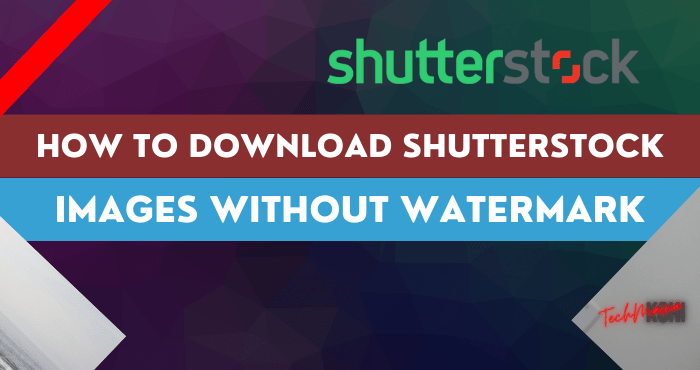If you’re looking to use Shutterstock images for your project, you might wonder how to get high-quality versions without those annoying watermarks. While Shutterstock’s images are premium content, there are legitimate ways to access them without watermarks, especially if you plan to purchase or license the images properly. In this guide, we’ll explore how to navigate
Understanding Shutterstock’s Licensing and Watermark Policy

Shutterstock is a popular stock photo platform that provides high-quality images for various uses, but these images come with specific licensing rules. When you browse Shutterstock, you’ll notice watermarks on preview images. These watermarks are there to protect the creator’s rights and prevent unauthorized use. To access the original, high-resolution, watermark-free images, you need to purchase a license or subscription.
Here’s what you need to know about Shutterstock’s licensing:
- Standard License: Allows you to use images for web, digital, and small print projects. It’s suitable for most personal and commercial uses, but it limits how many copies you can produce.
- Enhanced License: Offers higher usage rights, including unlimited copies and use in merchandise for resale.
Whenever you see a preview image with a watermark, it’s a protected version meant to give you a sense of the image. To get the watermark-free, high-resolution version, you must purchase the appropriate license. Attempting to bypass this process through unauthorized means is illegal and violates Shutterstock’s terms of service.
Some people look for free or unofficial ways to download images without watermarks, but these are risky. Not only could you face legal consequences, but you might also encounter malware or low-quality images. The best approach is to use Shutterstock’s authorized channels—either buying images directly or subscribing to a plan that suits your needs. This way, you get legal access to stunning, high-quality images without watermarks, and you support the creators behind them.
Legal Ways to Access Free Shutterstock Images

If you’re on the hunt for high-quality Shutterstock images without spending a dime, it’s essential to stick with legal and ethical methods. While it might be tempting to look for shortcuts, using images without proper authorization can lead to copyright issues and even legal trouble. Luckily, Shutterstock offers a few legitimate ways to access free images, so let’s explore them.
First up, Shutterstock’s Free Image Collection. They regularly update a selection of free images that anyone can download and use for personal or commercial projects. These images are carefully curated and licensed for free use, which means you don’t have to worry about copyright infringements. To access these, simply visit the Shutterstock website and navigate to the Free Images section — usually found under their main menu or footer links.
Another legal way is through Creative Commons (CC) licensed images. While Shutterstock primarily sells images under their licensing terms, some contributors upload images under Creative Commons licenses, which allow free use with certain conditions. Always double-check the license details—some require attribution, while others are free to use without attribution. You can filter search results to find CC-licensed images that are available for free.
Additionally, many photographers and artists share their work on platforms like Unsplash, Pexels, or Pixabay, which are known for offering free, high-resolution images. Although these aren’t directly from Shutterstock, sometimes you can find similar images or even Shutterstock’s free images shared on these sites. Remember, always verify the licensing terms before using any image to ensure you’re compliant with the creator’s requirements.
Lastly, consider joining Shutterstock’s Contributor Program. If you’re a photographer or artist, you can upload your own work and choose to make some images available for free. While this is more about sharing your own content, it’s a way to access free images legally—plus, you’ll be supporting a community of creators.
In summary, the key to accessing free Shutterstock images legally is to utilize their free collections, respect licensing terms, and support platforms that promote free creative work. This way, you’ll avoid any legal headaches and support the hardworking photographers behind the images you love.
Using Shutterstock’s Free Trial and Promotional Offers
If you’re eager to get your hands on some premium Shutterstock images without paying, their free trial and promotional offers are your best bet. These options are designed to let new users explore the platform’s vast library of high-quality images risk-free. Let’s walk through how to make the most of these opportunities.
Most importantly, Shutterstock offers a free trial period—usually 7 days—that allows you to download a set number of images or videos without any charge. To get started, simply sign up for the trial on their website. During the registration process, you’ll need to provide your payment details, but don’t worry—your card won’t be charged if you cancel before the trial ends.
Once you’re signed up, you can browse and download images just like a paid subscriber. Keep in mind, the trial often comes with a download limit (for example, 10 images). After reaching that limit, you’ll need to upgrade to a paid plan if you want to continue downloading without watermarks or restrictions.
To maximize the value, consider planning your downloads ahead of time. Pick the images you truly need—whether for a project, presentation, or social media—to make the most of the free trial period. Remember, if you decide not to continue with a paid subscription, be sure to cancel before the trial ends to avoid unwanted charges.
Beyond the free trial, Shutterstock occasionally runs special promotional offers—like discounted monthly plans or bundle deals. These promotions can significantly reduce the cost of access, allowing you to download more images at a fraction of the usual price. Keep an eye on their website or subscribe to their newsletter to stay updated on these offers.
Another tip is to combine the free trial with other free resources on Shutterstock, such as their free image collections or contributor images. This way, you can gather a nice variety of high-quality images without paying upfront.
In a nutshell, Shutterstock’s free trial and promotional deals are excellent ways to access their premium images legally and without watermarks, especially if you only need images for a short-term project. Just remember to keep track of your trial period and cancel if you decide not to continue, so you’re not surprised by charges later on. Happy downloading!
Alternative Resources for Free Stock Images Without Watermarks
While Shutterstock is a fantastic platform for high-quality images, it’s not the only place to find free, watermark-free stock photos. If you’re looking to diversify your options and explore other trustworthy sources, here are some great alternatives:
Unsplash
Unsplash is a community-driven platform offering a vast library of free, high-resolution images contributed by photographers worldwide. The best part? All images are free to download and use without watermarks or licensing worries. Whether you need nature shots, cityscapes, or lifestyle photos, Unsplash has you covered.
Pexels
Pexels provides a curated collection of free stock photos and videos. Their library is easy to navigate, and images are categorized for quick searching. Like Unsplash, all content is free for commercial and personal use, with no attribution required (though giving credit is appreciated!).
Pixabay
Pixabay offers over 1.8 million free images, videos, and music. Their images are released under a Creative Commons license, meaning you can use them freely without watermarks or attribution. It’s perfect for bloggers, designers, or anyone needing versatile visuals.
Other Notable Mentions
- Freepik – Offers free vectors, illustrations, and photos, but be sure to check the license for each resource.
- Burst by Shopify – Focuses on business-related images suitable for marketing and branding.
- StockSnap.io – Regularly updated with fresh images, all free to use without watermarks.
Exploring these sites can significantly expand your visual library without worrying about watermarks or licensing issues. Remember, each platform has its own licensing terms, so it’s always good to double-check the usage rights, especially if you plan to use images commercially.
Tips for Safely Downloading and Using Stock Images
Using stock images responsibly ensures you respect photographers’ work and avoid legal issues down the line. Here are some helpful tips to keep in mind when downloading and using stock photos:
1. Always Check the License
Before downloading or using an image, review its license. Some images are free for personal use but require attribution for commercial projects. Others might have restrictions on modifications or redistribution. Stick with images labeled as royalty-free and free for commercial use whenever possible.
2. Use Reputable Sources
Download images from well-known, trusted platforms like Unsplash, Pexels, Pixabay, and others mentioned earlier. These sites have clear licensing policies and usually do a good job of vetting their content, reducing the risk of copyright infringement.
3. Avoid Downloading from Suspicious Sites
Steer clear of websites that offer free images but lack clear licensing information or request unnecessary personal data. These sites might host copyrighted images with watermarks or malicious files that could harm your device.
4. Save and Organize Your Downloads
Keep your images organized in dedicated folders with clear naming conventions. This makes it easier to find the right image later and ensures you always have proper records of where each image came from and its license details.
5. Give Proper Attribution When Required
While many free stock images don’t require attribution, some do. If the license requests credit, make sure to give proper attribution by mentioning the photographer’s name and the source website. A simple way is to include a line like: “Photo by [Photographer’s Name] on [Website].”
6. Edit and Use Images Respectfully
If you plan to modify images, ensure the license permits it. Also, avoid using images in a way that could be considered defamatory or misleading, and always respect the depicted subjects’ privacy rights.
By following these tips, you’ll not only stay within legal boundaries but also support the hardworking photographers and artists who create the beautiful visuals we enjoy every day. Happy sourcing!
Conclusion and Best Practices for Using Shutterstock Images Legally
Using Shutterstock images can greatly enhance your creative projects, but it’s essential to do so responsibly and legally. Always ensure you have the appropriate license for the intended use of each image, whether it’s for personal, commercial, or editorial purposes. Remember that unauthorized use or distribution of copyrighted images can lead to legal repercussions and damage your reputation.
To stay compliant, follow these best practices:
- Purchase the correct license: Choose the license type that fits your needs—Standard or Enhanced—and understand the usage restrictions.
- Download images legally: Always download images directly from Shutterstock or authorized platforms to avoid watermarks and legal issues.
- Give proper attribution: Although Shutterstock images typically do not require attribution, verify license requirements for each image.
- Respect image restrictions: Avoid modifying or redistributing images beyond the license scope.
- Keep records of licenses: Maintain documentation of your purchases to prove lawful use if needed.
By adhering to these guidelines, you can confidently incorporate Shutterstock images into your projects while respecting copyright laws. Always prioritize ethical sourcing and proper licensing to support creators and ensure your work remains legally compliant.


